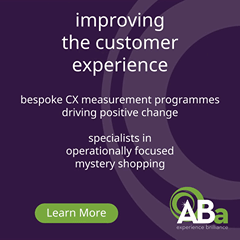Review: Digital Transformation Strategy 2023
Retailers need to better understand their customers through a combination of data and actually talking to them if they are to leverage their technology more effectively and deliver an improved, frictionless shopping experience.
This was an underlying theme at The Retail Bulletin Digital Transformation Strategy 2023 virtual conference where Kaylie Mitten, senior digital product manager at FatFace, recommended retailers: “Start by looking at your customer but not just from the analytical data. Breakout and talk to the end customer.”
Talk to your customers
Only when retailers have an understanding of what they are doing well and the problems they have can they begin to think about customer needs and to prioritise the actions they need to take to address the issues.
“Understand what you want an optimised customer experience to look like and then you can look at the technology. Be customer-first rather than solution-first,” she says, adding that FatFace is combining this knowledge to sweat its existing technology and not just make big changes with new IT.
Ed Duggan, financial & commercial director at Fishpools, agrees with the gathering of relevant data and suggests retailers need to ensure they consider all their channels. “If you are a multi-channel retailer then be careful that you don’t just default to [data gathering] online. Get out onto the shop-floor and go through the shopper journey yourself and see what customers want. You need to walk the store and online,” he suggests.
Considering all touch-points
This approach has been adopted by Anouk de Lange, e-commerce manager & e-business specialist at JDE Coffee, who says that quantitative data such as traffic figures across all the company’s touch-points are placed into a spreadsheet and this is analysed alongside a second spreadsheet containing qualitative data from questions that have been asked of customers about their experiences across all the touch-points.
For Chris Delahunty, head of digital marketing at 3rd Rock, which is primarily a DTC digital company, understanding the consumer involves finding where prospective customers are and how to get to them: “We’ve gone to climbing events, fashion shows and festivals. The
advantage of DTC is we don’t have 100 stores and so you go to where your customers are and we tailor the experience to these different events and we ask customers about what they want.”
Jackson Versitano, regional manager for retail in UK & RoEMEA at Lightspeed Commerce, agrees with such an approach and suggests “you need to understand your customer base and portray your story”. He adds: “It needs to be very unique to attract your specific type of audience.”
Personalising the relationship
Understanding customers and conveying this to them through personalisation is vital, according to Rob Savin, marketing director at Alpkit, who says: “How do we show that we know the customer [online]. In-store you could be welcomed but online it’s often not so good. It could simply involve sending a customer the instructions for the new purchase they’ve just made. This shows you know them and it’s important.”
Customer data can certainly help strengthen the relationship between shoppers and retailers, as highlighted by Gracia Amico, chair at Closer Pets, who says the company sells cat flaps and bowls that are accessed electronically by chips on the cat. It looked at harnessing the data from the products to determine the eating and drinking patterns of the cats and their movements in and out of properties and it developed an app.
“When a pet owner sees different behaviour in their cat they could then possibly see from the data that the animal had not been eating so much. This data could then be shared with their vet. This data could be very valuable to the business as it could enable talks with pet care providers while the people who use the app have become our best customers, she says.
By knowing customers more intimately it can also help reduce friction in the shopping journey. For Jane Smith, commercial director at Hellmann Worldwide Logistics, the frictionless customer experience has to straddle all parts of a retailers’ business including logistics and fulfilment. To achieve this Smith says it is essential that a third-party provider (3PL) is “fully onboard and capable of delivering an omni-channel offering”.
Walking the digital talk
With the advent of AI and the growing focus on carbon footprints Smith says: “A 3PL has to be on the same roadmap of sustainability, ethics and the environment as the retailer. Are they willing to invest in this and do they walk the digital talk?”
Highlighting Hellmann’s approach is its in-house innovations team that is currently looking at ChatGPT as well as drone deliveries. “Whenever I need a solution then we have people internally. You need this [capability] to support retailers. These are hot topics and we’re leading,” says Smith.
There is certainly no escaping AI right now and Emma Siveyer, head of digital & experience at Three UK, says: “It’s huge for us right now. Customer expectations are so high since ChatGPT came out. Organisations have to go through legals and regulations before launching and taking advantage of AI but it has to be done quickly. It’s not good enough to have a basic chatbot as you need conversational language and for it to be personalised to the customer. It’s very exciting but there’s a huge amount of work to do.”
Such is the power of the AI solutions that are being released that Siveyer predicts the technology will replace people, with the call centre in particular will be impacted: “Chatbots now are stilted but with ChatGPT it’s moving into the space whereby if you harness the right data then it will replace the call centre.”
Looking after the data
The importance of having quality data to feed into AI tools is highlighted by Delahunty: “The results you get out are only as good as the data you put in.” With the data being so valuable it has to be well looked after and this is particularly important for payments data because payments systems are now much more enhanced and retailers are having to deal with myriad regulations including those around GDPR.
Frédéric Frizzarin, head of pre-sales for merchant services at Worldline, says: “If you use lots of data then ensure it is secure in order to avoid leaks and also any unnecessary chargebacks. Retailers should use tokenisation whereby any time a consumer makes a purchase their raw details are stored on [third-party] secure servers and a token is given to the retailer, which ensures any sensitive data is replaced [in the retailers’ systems] by a token.”
There is no disputing the power of AI but for Delahunty there are currently limitations. “AI is good at functional stuff but I’m missing the creativity. It’s the human ability to do something new. We don’t know what’s coming next but how can we use it to be more creative?” he asks.
For Michael Jervis, head of digital at MattressOnline, there are times when nothing beats the value of human interactions. This was a driver of MattressOnline moving from a pure digital business to having its own physical stores.
“Having a store footprint has given us a sense of what products work well in-store and we can then bring them online. You can’t recreate real people interacting. You need the human touch. It’s about balancing data and digital with personal interactions. Reinforcing the data [with real world findings] is super valuable,” he explains














